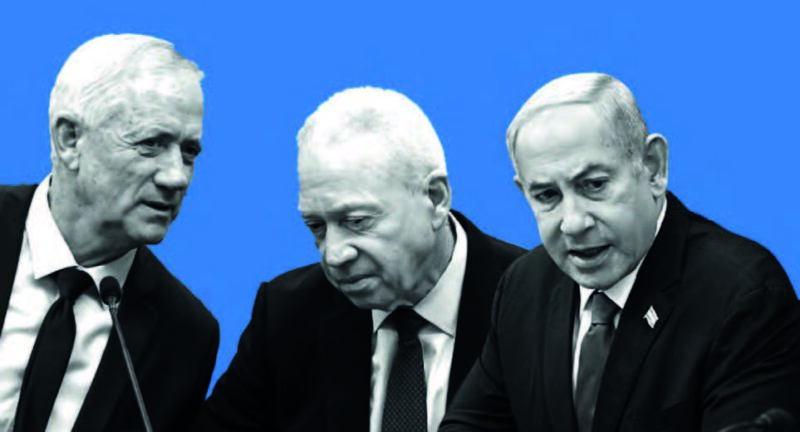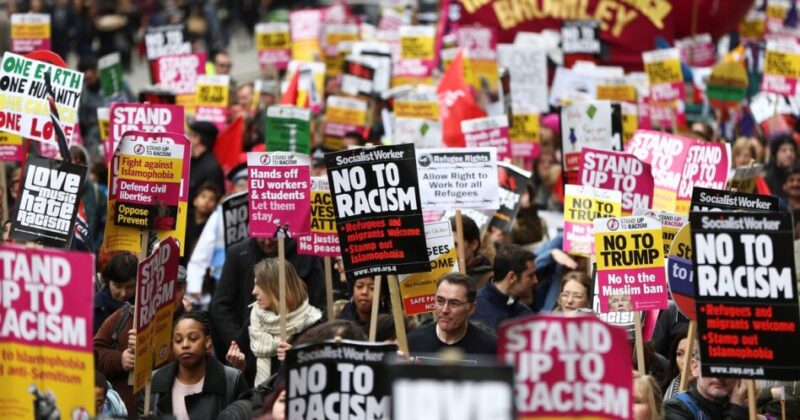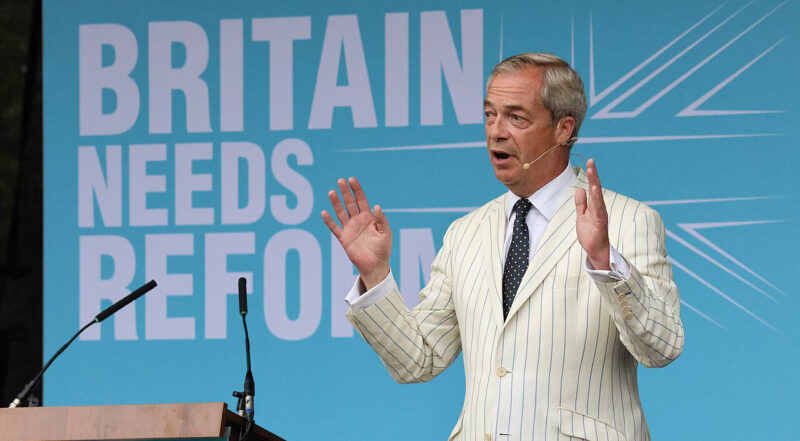The Revolutionary Party

New movements, like this mass assembly in Syntagma Square, Greece, have transformed the political landscape
The resistance today, from Tunisia and Egypt to Wisconsin and London, has brought a fundamental question back into focus. What forms of organisation and what type of politics should we adopt in the fight against capitalism? How can we orientate the new movements towards the socialist goal? How do we avoid repeating the mistakes of the past? Jo Cassidy and Dave Stockton explain what we mean by a revolutionary party
The urgent need for a revolutionary party
At a time of intense crisis in Europe – generated by the demands that ordinary people pay the full costs of the bank bailouts – the prestige of political parties stands at an all time low.
In Syntagma Square thousands of young Greeks chant, thieves, thieves at the MPs, voting for another devastating programme of cuts. So hostile are they to the betrayal of the politicians that even representatives of left wing parties are told they were not welcome to speak to the crowds.
In Britain the way that the Liberal-Democrats brazenly broke their election pledges on tuition fees outraged many students who voted for them and led to the storming of the Tories’ Milbank HQ and tens of thousands demonstrating s around parliament in November an December.
In 2011 new movements – now calling them selves the “outraged”- have taken to the squares and streets right across Europe.
From Athens to London and Madrid young people repeatedly told the cameras that parties offer them no real alternative. They feel the parliamentary system is unrepresentative of the majority who opposed to the bank bailouts and the cuts in vital services.
The result is that many young people have drawn the conclusion that it is political parties as such that are a big part of the problem. Instead they counterpose the social movements, inspired by Cairo’s Tahrir Square copied in Madrid’s Puerta del Sol or Athens Syntagma squares. They argue that the answer is to create some sort of direct democracy.
Occupying the squares is a positive step – demonstrating on a mass scale that “we are the people” and that we reject paying the price of keeping billionaire bankers, corporate CEOs and overpaid politicians living the high life. It is excellent that by using of the social media the stifling private and state control of press and TV can be circumvented and millions made aware of the rip off that is being perpetrated on them.
But as the intransigence of the Greek government shows protests alone – even mass square occupations and one day general strikes will not stop the cuts and austerity. If no political alternative exists to the old parties, totally united in their determination to carry out cuts they will continue to win elections and carry out cuts. In Britain too there was no alternative to Gordon Brown’s cuts and bailouts except the Tories and Lib-Dems, who just made them even faster. In Greece, Portugal and Spain the alternative to the “Socialist Party ” cutters are… the right wing parties who will do the same.
What we must recognize is that we have not only to block the capitalist politicians from carrying out their plunder of our public services but to also take away their powers to carry out future attacks. To do this we need an organisation which can give a lead to the struggles. In short we need a political party, though one of a radically different sort to those of our rulers.
In fact the mass revolt against austerity has opened up a space for a new left – to build an anti-capitalist and revolutionary party which breaks with the reformism of the old Left. It must be democratically controlled by its own members. The role of the revolutionary party is not primarily to win elections – it is to lead the fight on the streets and in the workplace.
Unlike the capitalist parties it must not make big promises and then in power just do what the bosses and the bankers dictate. Its main task is to win the support of millions through leading them into action. Elections should be used to publicise its programme for mass action not to pander to the prejudices and propaganda of the millionaire owned media. When it wins MPs and councillors these must not control the party but be under the control of the party.
Such a revolutionary party today could have a huge impact within the movements of resistance, arguing for tactics to take the movement forward, providing a voice for all the exploited and oppressed, fighting racism, sexism and imperialist wars as well as all exploitation and poverty.
In last year’s student movement for example, a revolutionary party could have kept the spontaneous fire of revolt burning long after the vote was passed in Parliament to raise tuition fees. It could have organised school and university students to stay in Parliament Square and in occupation in the universities across the country. It could also have organised workers to support the students by taking strike action in solidarity until the ConDem policy was reversed.
Such a revolutionary party could organise the rank and file in the unions to take unofficial action. While the trade union leaders are dragging their feet about whether to call effective action which can challenge the cuts, it could prepare workers to coordinate a general strike, with or without the trade union leaders.
It is the role of a revolutionary party to throw itself into every movement, whether for higher wages or more democracy – as we are seeing in the Middle East – and patiently explain its politics. Only a political party can put forward a both a total solution to the crisis based on making the rich pay and building a society based on meeting human need. It can work out a strategy and the key tactics necessary at any given moment which can achieve our goal. It is through this process that we can fuse communist ideas with the mass social movements and the class struggle.
The members of such a party must be the vanguard of the struggle who show the value of their ideas in practice.
Without it there is always the danger that – as with the education struggles last December – they eventually exhaust themselves and we have to start all over again with the next issue. A party can transmit the lessons we have learned and speed up the process It can and take us from the present defensive battles to the struggle for power.
“The progress of a class toward class consciousness, that is, the building of a revolutionary party which leads the proletariat, is a complex and a contradictory process. The class itself is not homogeneous. Its different sections arrive at class consciousness by different paths and at different times. The bourgeoisie participates actively in this process. Within the working class, it creates its own institutions, or utilizes those already existing, in order to oppose certain strata of workers to others. Within the proletariat several parties are active at the same time. Therefore, for the greater part of its historical journey, it remains split politically…The historical interests of the proletariat find their expression in the Communist Party – when its policies are correct. The task of the Communist Party consists in winning over the majority of the proletariat; and only thus is the socialist revolution made possible. The Communist Party cannot fulfill its mission except by preserving, completely and unconditionally, its political and organizational independence apart from all other parties and organizations within and without the working class.” Leon Trotsky 1932
Principles of the revolutionary party
Many people believe that the model of the revolutionary party was developed exclusively by V.I. Lenin. This overlooks the foundations laid by Karl Marx, who believed that the self-emancipation of the working class could not be achieved by “saviours from on high”; that a working class party must be independent of all capitalist parties or personalities.
Marx and Engels also believed it must embody a unity of theory and practice. The understanding of capitalism, the nature of exploitation, of crises, of social questions like women’s liberation has to be developed and implemented in order to change the world. In turn its practice enriches and develops its theory.
But it was indeed the Russian revolutionary Lenin who distilled these lessons into a practical guide for building a revolutionary party: one whose task was to lead the working class in a revolutionary assault on the capitalist state, with all its other sophisticated instruments of repression and deception.
The model of the party that Lenin developed cannot be treated as a fixed formula that can be imposed on any situation; what a revolutionary party looks like will change and adapt according to historical circumstances and national conditions.
Such a party must be able to continue its work in conditions of illegality when the ruling class deprives us of our democratic rights. At the same time when we have democratic rights a revolutionary party must use them to the full.
Consciousness
Nevertheless, there are fundamental principles, which are vital and form the foundations of any effective revolutionary party through all the stages of its life. These were outlined first in Lenin’s classic work, What Is To Be Done?
This included the following statement, still highly controversial to this day:
“Class political consciousness can only be brought to the working class from without, that is only from outside the economic struggle.”
This has been subject to so much misinterpretation that we should clarify what it means. It does not mean that workers must be lead by outsiders, by an elite of middle class intellectuals. Nor does it deny that class consciousness originates in day-to-day the struggles against the bosses and their state under capitalism.
It means quite simply that struggles over wages and conditions, over economic issues alone; waged by trade unions alone, will not develop spontaneously into a struggle for socialism; it will not automatically create a revolutionary socialist consciousness.
The reason for this is twofold. The unions’ outlook starts from that of the separate trade or occupation of its members and at a certain point these divisions tend to obstruct a class wide outlook. Secondly, workers are subjected to powerful influences “from the outside” quite apart from that of revolutionaries. Working class people are subjected to the ceaseless propaganda from the schools, the media, the churches; all stressing that capitalism is the best, in fact the only possible system.
This is all the more effective, not because workers are particularly unintelligent – on the contrary, capitalism has increasingly had to educate the working class – but because capitalism is the highest form of class society; it hides its exploitation under the ideology of democracy and the free contract between worker and employer.
This barrage of propaganda aimed at keeping the workers divided and dominated by ruling class ideas can only be combated by the ideas of socialism and revolution. This can only be done “from outside” of the sphere of pure and simple trade unionism by a political party whose goal is to transform fragmented and sectional struggles into a political struggle which identifies capitalism as the enemy.
Lead from the front
But this party cannot remain outside of the struggles of the working class. It has to be radically different to the purely parliamentary parties like the Labour Party which leaves the struggle in the workplace to the trade unions (except when it condemns strikes as “irresponsible”).
For a Leninist party its members must be amongst the best activists and explain in every arena of struggle that capitalism is the root, not only of low pay, unemployment, cuts, but also of exploitation, racism, sexism and war. They must be fighters in the forefront, the most dangerous places of the class struggle. If they earn the respect of their fellow workers they will be able to play the role of a vanguard.
Lenin’s idea is that party members must be cadres – professional revolutionaries – meaning not paid officials, but people who devote considerable time and energy to politics and make it the centre of their lives. Their work is in the old revolutionary slogan to “educate, agitate and organise.”
The great majority of its cadres must be workers if they are to be real leaders in the class struggle but the party must draw into its ranks the best fighters from all struggles and make these struggles an integral part of its own programme and activity.
That was what the Bolshevik Party was like and why it was able to turn the “spontaneous” revolution of February 1917 into the conscious seizure of power by the workers councils in October. These key principles of revolutionary politics, programme and internationalism are as relevant today as when Lenin developed them and it is the burning task of revolutionary socialists to put them into practice in the huge battles we face today.

Democratic centralism not Bureaucracy
Lenin’s model of the revolutionary party, when put into practice by the Bolsheviks, managed to achieve a real workers’ revolution, based on the democracy of workers councils (soviets). The international workers’ movement has been unable to repeat this victory since. Indeed, the experience of the 20th century has marred the image of the revolutionary party amongst activists today.
This can be put down to the influence of Stalin over the world communist movement following the bureaucratisation of the Soviet Union and the Communist Parties internationally. It meant the total erosion of internal democracy and plurality within the communist parties. It signaled the turning point, from the healthy, living revolutionary parties of the early 1920s to the bureaucratic parties of the rest of the 20th century. The parties became tools of the dictatorship in the USSR, their militants uncritical and passive. The genuine Communist tradition of critical thinking was crushed internally.
The fundamental principle of internationalism was replaced by following orders from Moscow. From the mid-1930s Communist Parties forged links not just with reformist workers parties but also with those of the liberal bourgeoisie. The aim was to win capitalist allies to support Soviet Union, which it was claimed was building socialism in one country. Revolutionary opportunities were squandered in China, Germany, France and Spain to preserve the Soviet bureaucracy which itself became a barrier to the creation of socialism and workers democracy.
Genuine working class democracy – democratic centralism was replaced by bureaucratic centralism. It was the exact opposite of Lenin’s model where there is freedom of debate and discussion before decisions are taken and everyone acts on them. Discipline in action does not preclude democracy; the two re-enforce one another.
Democratic centralism is the way that the workers movement organises, in a workplace we have a vote for a strike and we accept the majority decision. That is democracy – and it is the same principle in a revolutionary party.
The lessons of the 20th century cannot be ignored, they must be taken into account to expand and renew our idea of the revolutionary party. We must emphasis the democracy at the heart of the party. It is a healthy culture of internal debate which allow a party to develop a correct programme and this can never be discarded, as it was by the Communist International after 1924.






